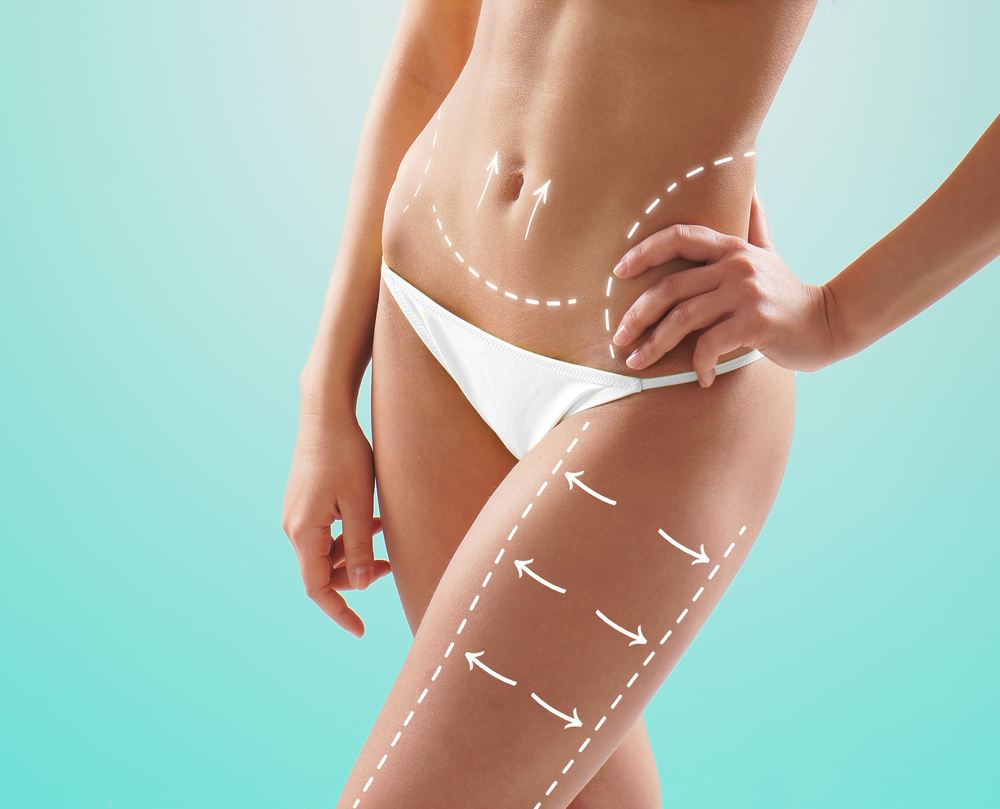Liposuction is a fat removal procedure that was invented by a French surgeon in the 1920s. However, it did not become popular in American until the 1970s. Today, it is the second-most popular cosmetic procedure in the country. Only breast augmentation is more popular when it comes to cosmetic procedures. Today, our aesthetic experts at LA Plastic Surgery & Dermatology in Bradenton, Liposuction Florida are discussing how long this procedure takes to complete.
How Long Does a Liposuction Session Take?
The average liposuction (lipo) session takes between one and two hours to complete. We will advise you of the expected duration of your procedure during your initial consultation once we have evaluated the size of the targeted area and the volume of excess adipose tissue it stores. At this time, we will determine which technique would benefit you the most. The technique used to perform the procedure affects how long it will take.
How Long Does it Take to Prepare for This Procedure?
It only takes a couple of weeks to prepare for this procedure. During the two weeks leading up to your scheduled appointment date, you need to avoid using tobacco products and consuming alcohol. One week before your procedure, you should stop taking ibuprofen and other drugs that have the potential to affect blood clotting. You should also refrain from shaving the targeted areas before your procedure so skin irritation does not occur.
How Long Does it Take to Recover From This Procedure?
On paper, it takes six weeks to recover from liposuction. During this time, you must avoid strenuous activities. However, you will only need to take a week or two off from work to focus on your recovery. The nature of your occupation, the technique used to perform your procedure and the scope of your procedure will affect how many days you will need to take off from work.
What Should I Eat After My Procedure?
After your procedure, you may feel too tired to eat. Depending on your health and personal preference and the scope of your procedure, you may receive sedation or general anesthesia to keep you asleep during the procedure. Both general anesthesia and sedation can lead to drowsiness for several hours after you wake up. However, proper nutrition is essential during your recovery period.
If you don’t feel hungry after your procedure, we strongly encourage you to at least drink a yogurt-based smoothie. Until your skin has healed, you need to focus on eating protein and produce. Additionally, you may want to incorporate some extra fiber into your diet until you are no longer taking prescription painkillers.
Protein
It is essential that you eat enough bioavailable protein during the first couple of weeks following your procedure. Great sources of bioavailable protein include eggs, yogurt, milk, almonds, and tuna. You can also get bioavailable protein from beef and poultry. The average sedentary man needs roughly 56 grams of protein daily. The average sedentary woman needs roughly 46 grams of protein daily.
However, recovering from lipo requires a lot of protein. We recommend trying to consume between 69 and 84 grams of protein daily for a couple of weeks. Protein contains many essential components your skin will need to recover rapidly, like amino acids and collagen.
Produce
It is also very important to eat plenty of produce during your recovery period. Most vegetables won’t blow your calorie budget; almost all veggies are loaded with essential micronutrients that will help your skin heal quickly. Fruits tend to be higher in calories. However, the nutrition and satiety you get from fruits cannot be ignored.
Both fruits and vegetables have a place in a balanced diet. We recommend eating at least one serving of each at every meal. If you need help planning your meals during your recovery period to ensure you get all of the nutrients you need, seek the help of a registered dietician. With a little planning and prep work, it is easy to get your recommended daily allowance of micronutrients from fruits and veggies.
Fiber
The average woman needs between 21 and 25 grams of fiber daily. The average man needs between 30 and 38 grams of fiber daily. Both men and women alike should keep in mind that roughly a quarter of their total fiber intake should come from soluble fiber. The other 75% of their total fiber intake should come from insoluble fiber. Note, if you take prescription painkillers after your procedure, you may want to increase your fiber intake.
Just be sure to increase your water intake as you increase your fiber intake. Great sources of fiber include almonds, lentils, beans, and peas. Just be careful if you plan to get a lot of your fiber from almonds. They are high in fat and often high in sodium.
How Much Should I Drink After My Procedure?
You should try to drink 150% of your baseline hydration needs during the recovery period following your lipo session. In other words, if you normally need to drink 64 ounces of water and tea to maintain pale urine consistently, you should drink 96 ounces of water and tea during your recovery period. Drinking plenty of water after your lipo session provides numerous benefits.
For example, water helps your body flush out the last of the general anesthesia after most of it has worn off. The faster your body flushes out the drug, the less likely you are to feel drowsy during the first 24 hours post-op. Additionally, water improves circulation so more nutrient-rich blood can flow through the treated areas.
How Should I Sleep After My Lipo Session?
How you should sleep after your lipo session depends on the areas that were targeted for fat removal. For example, if you had unwanted fat removed from your chest, you should sleep on your back during your recovery period. In contrast, if you had unwanted fat removed from your buttocks, you should sleep on your stomach.
We recommend practicing the position you will be sleeping in before your procedure. It is essential for your body to get plenty of rest. However, you may not be able to sleep soundly if you are trying to sleep in a new position and worrying about rolling over. You may find you need to buy a new pillow or mattress topper to make sleeping in a different position comfortable. If you’re worried about rolling over, sleep in a recliner or build a pillow fort around yourself.
How Long Do the Results of This Procedure Last?
The results of this procedure are considered permanent. Regardless of the lipo technique used, fat is suctioned out of the targeted area or areas. We consider the results of lipo permanent because the human body stops being able to produce new fat cells after puberty. Therefore, you will never have as many fat cells in the targeted area once some are suctioned out.
However, you must understand it is possible for your contours to change over time. Adipose tissue cells are great at expanding to store energy (fat) for future use. Therefore, if you eat above maintenance and your body can’t store any more glycogen (carbohydrates and water) for future use, it will store fat. It is possible that your body stores fat in the treated areas. If you gain too much weight in the future, you may need a follow-up procedure.
How Much Weight Can I Gain Without Affecting My Results?
Everyone stores fat differently so there is no way to say definitively how much weight you can gain before you need a touch-up procedure. However, a good rule of thumb is you should gain no more than 10 pounds after your lipo session.
If you have struggled with weight maintenance in the past, we recommend weighing yourself at least monthly and recording your weight. Keeping a written record of your weight over time will help you spot an upward trend before you realize your favorite dress is too small.
Am I a Good Candidate for This Procedure?
An initial consultation is required to determine if you are a good candidate for lipo. We need to go over your medical history, the medications and supplements you are currently on, and your current overall health. Besides determining you are healthy enough to receive lipo, we also need to ensure your areas of concern would benefit from fat removal. Here’s a closer look at a few of the things we look for.
Enough Excess Fat to Warrant Treatment
Part of determining you are a good candidate for lipo is ensuring your trouble regions have enough excess fat to warrant treatment. This procedure is ideal for people with at least an inch (five pounds) of pinchable fat in an area of concern. However, it is possible to perform this procedure on people with less pinchable fat.
Note, it is also important that there is not too much fat in an area targeted for treatment. Depending on the size of the targeted area, lipo may only remove around a quarter of the adipose tissue cells in the area. If there is too much fat in the targeted area, you probably won’t be satisfied with your results after a single session.
Elastic Skin
We also consider the elasticity of the skin in the targeted area when determining who is a good candidate for lipo. It is important for the skin in the targeted area to be elastic because your skin will need to adjust quickly to your slimmer contours. When young, healthy people lose weight gradually, their skin has no trouble keeping up with the slowly slimming contours.
If you have inelastic skin and you lose between four and 11 pounds of fat in an hour, it may take several months for your skin to adjust to your new contours. For the best results, we encourage you to make caring for your skin health a top priority. Things you can do to improve the health and elasticity of your skin include:
- Drinking plenty of water
- Not smoking
- Wearing sunscreen
- Eating plenty of fruits and vegetables
Sculpt Your Ideal Contours Today
Your Liposuction in Florida session may take anywhere from one to two hours depending on the size of the area receiving fat removal, the amount of fat that needs to be removed, and the specific technique used to perform your procedure. If you are targeting several areas for fat removal in one session, your procedure may take a few hours. Contact us today at LA Plastic Surgery & Dermatology in Bradenton, FL to schedule your initial consultation.

